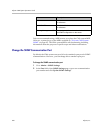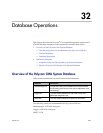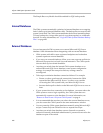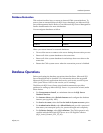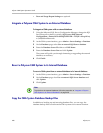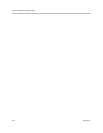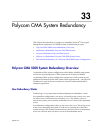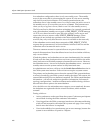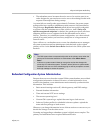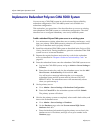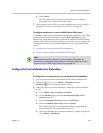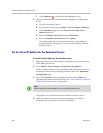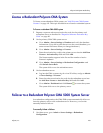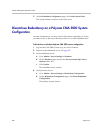
Polycom CMA System Operations Guide
432 Polycom, Inc.
In a redundant configuration, there is only one standby server. The standby
server is the server that is not managing the system. It is the server running
only the Polycom Service Monitor. In a normal operational state, the
redundant server is the standby server. In a failover state, the active server is
the standby server. (If at anytime you receive a
Cannot find server
error
when you try to log into a server, check to see if it is the standby server.)
The Polycom Service Monitor monitors redundancy. In a normal operational
state, the redundant/standby server sends a
SEND_REQUEST_STATUS
message
via TCP every three seconds on port 700 to the primary/active server and
expects the server to answer with a
SERVICE_RUNNING
message. (These
messages do not include any qualitative data about the health of other
services; they only verify that the active server is available on the network.)
If the redundant service sends three consecutive
SEND_REQUEST_STATUS
requests that go unanswered, its Service Monitor initiates a failover and the
redundant server becomes the active server.
The most common reasons for system failovers are power failures and
network disconnections. Note that failures in services do not initiate a failover,
only a server failure.
If both the primary and redundant servers start simultaneously (for example
if both are in the same location and recover from a power failure at the same
time), both servers will initially attempt to become the active server. However,
the redundant server—the server licensed as the redundant server—retreats to
standby status once the system reaches its fully functional state.
An administrator can force a failover via the Switch Server Roles function in
the CMA system user interface. Failover does not require a system restart.
The primary and redundant servers share the external CMA system database,
so what is recorded by one CMA system is read by the other CMA system. An
external Microsoft SQL Server database is required. The CMA system database
information—call records, endpoint registration information, and network
topology configurations—remains consistent and available during a failover
because both servers point to the same database.
Also, the failover to the redundant server seems to occur seamlessly because
the endpoints are registered with the virtual IP address, which remains
constant.
During a failover:
• Active conferences are dropped from the system. Conference participants
can call back in using the same conference information.
• Users logged into the CMA system user interface are disconnected during
a failover and returned to the main CMA system web page. Users can log
back in once the failover is completed.
• Users in the middle of an operation may get an error message, because the
system is not available to respond to a request.



